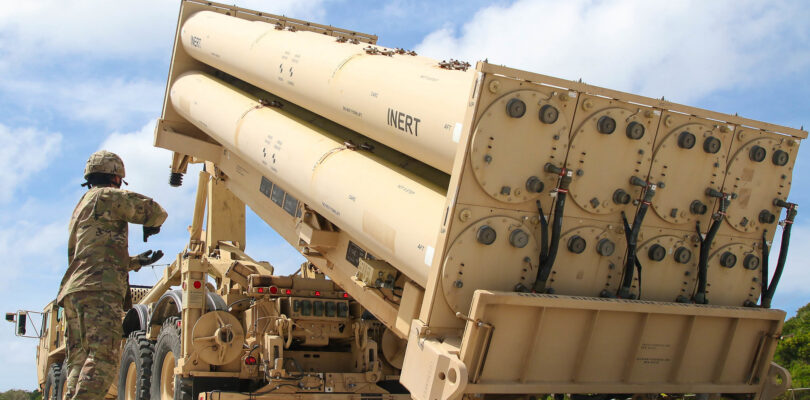The Defense Department has yet to develop a clear strategy to guide the construction, deployment and long-term management of the missile defense architecture it is building on Guam, the Government Accountability Office has determined.
The office is concerned that without such a plan, the effort risks cost and schedule overruns and an infrastructure unready to accommodate the additional personnel required to operate the defensive shield.
In a report released May 22, the government watchdog notes that while the Pentagon has set up organizations to manage the Guam Defense System and has now designated lead services for sustaining and operating it, there is no strategy to transfer responsibilities from the Missile Defense Agency to the various service leads.
“As a result, DOD risks schedule delays for the deployment of GDS [Guam Defense System] elements and incomplete plans for organization, training, personnel levels, and facilities, among other things,” the report states.
The Army, which is leading the effort to establish the system on the strategic island in the Pacific, also faces hurdles to advocate for construction and installation support from the other military services well-established on Guam.
And the Defense Department has yet to come up with firm numbers for personnel required to operate and sustain the system and estimates of when they might arrive, according to the report.
“Without clear personnel requirements or deployment schedules, the services will not be able to adequately plan for necessary support systems, which will reduce service personnel readiness and may exacerbate existing infrastructure,” the watchdog states.
At the end of 2023, the Pentagon pointed to 2024 as critical for establishing the planned missile defense architecture on Guam. As the threat from China continues to grow, DOD pledged to deliver a foundational capability to help stave off a potential attack directed at Guam by the end of 2024. That schedule is already slipping.
Guam is an island of nearly 170,000 people that sits in a vulnerable position — it is closer to Beijing than it is to Hawaii. The island plays host to a significant amount of U.S. combat power and would therefore be an attractive target for China in the event of a war in the Taiwan Strait.
The Missile Defense Agency and the Army sought a combined $1.5 billion in the fiscal 2024 budget to begin preparing the island by moving assets into place and integrating capabilities.
The Pentagon designated the Army in 2023 as the lead service overseeing the acquisition and execution plan for defending Guam.
Competing for resources
The current plan, according to the report, is to distribute elements of the architecture across 16 sites on the island and establish a Guam command center. The Pentagon is planning for its first deployment to begin in fiscal 2027, with final GDS elements coming in fiscal 2032.
The architecture is a tall order, considering the Army’s previous experience establishing a Terminal High Altitude Area Defense, or THAAD, system on Guam in 2013.
The THAAD battery, known as Task Force Talon, was first deployed as expeditionary but became permanently stationed in June 2016 to defend against possible ballistic missile threats from North Korea.
Over a decade later, the report points out that the Army does not have sufficient installation support for the THAAD battery and has had trouble getting approvals from the Navy for construction to support the system. The Army’s status on the island leaves it without its own construction planners, forcing it to rely on other services.
For example, GAO reports that the THAAD unit did not receive approval to start environmental work until January 2024 to construct a temporary maintenance facility for equipment after a typhoon hit the island in May 2023.

The unit also has limited storage space for parts and has to leave some parts outside unprotected, resulting in continuous corrosion issues.
And austere conditions have resulted in “morale challenges,” GAO found. The THAAD unit had just installed a latrine with running water and an ice machine in 2023. There is still no drinkable water at the location.
The Army is going to require a much larger number of facilities to support the new missile defense architecture and wants to “make Guam a duty station of choice,” the report states.
The Army will continue to have to rely on installation support from the other services because it won’t be establishing its own base on the island, GAO said.
“The Army will likely face challenges in advocating for construction priorities and coordinating installation support across multiple locations.”
At the same time, the Pentagon is looking to move personnel to the island for the missile defense system. The Marine Corps is also relocating 1,700 Marines from Okinawa, Japan, to Guam. The plan is to move them all by 2029, the report notes.
The agency previously reported Guam’s limited housing is a concern as the Marines build up a presence there, and the Air Force and Navy both have construction priorities for their own bases that could compete for resources needed for the missile defense system’s establishment.
The Pentagon also struggled to determine which service would be responsible for operating and sustaining which elements of the Guam architecture. GAO indicated there were some internal disputes over the division of responsibilities for various aspects of the system.
Determining density
Despite the deputy secretary of defense directing the Army in June 2023 to determine how many personnel would be required for GDS within 120 days, the service did not complete the task and still had not produced a number by August 2024, according to the report.
The Army told GAO it was waiting for the Pentagon to decide the lead organizations for operations and sustainment before determining personnel levels, facility needs and training plans.
The Pentagon has also not established a timeline for transferring responsibility, according to the report.
“DOD has proposed multiple military services to manage GDS, which makes developing a plan for operating and sustaining GDS particularly challenging,” the report states. “Specifically, DOD officials told us that this missile defense program will be the department’s largest and most complicated, presenting communication and planning challenges among the various DOD stakeholders.”
Without some prediction of personnel that will flow onto the island over what timeline, the Pentagon faces the prospect of “deploying personnel to Guam without adequate facilities or installation support services in place, including security of sites, fire protection and emergency management at bases operated by three different military services in Guam,” according to the report.
Some estimates state there will be a need for roughly 913 Army personnel in Guam by fiscal 2028, while another calculates a possible growth of 4,464 personnel by the same year.
Overall, the island’s population is estimated to grow from 17,917 personnel and dependents to 26,605 by fiscal 2034.
In its report, GAO recommends that the Pentagon develop a strategy with a timeline for transferring responsibilities to lead organizations and services for the various elements of the architecture.
The Army should also develop a “long-term strategy” for its organization as a supported command on the island.
And the defense secretary should determine personnel requirements needed for the architecture “to allow sufficient time for completing construction of necessary support facilities on Guam,” the report states.





